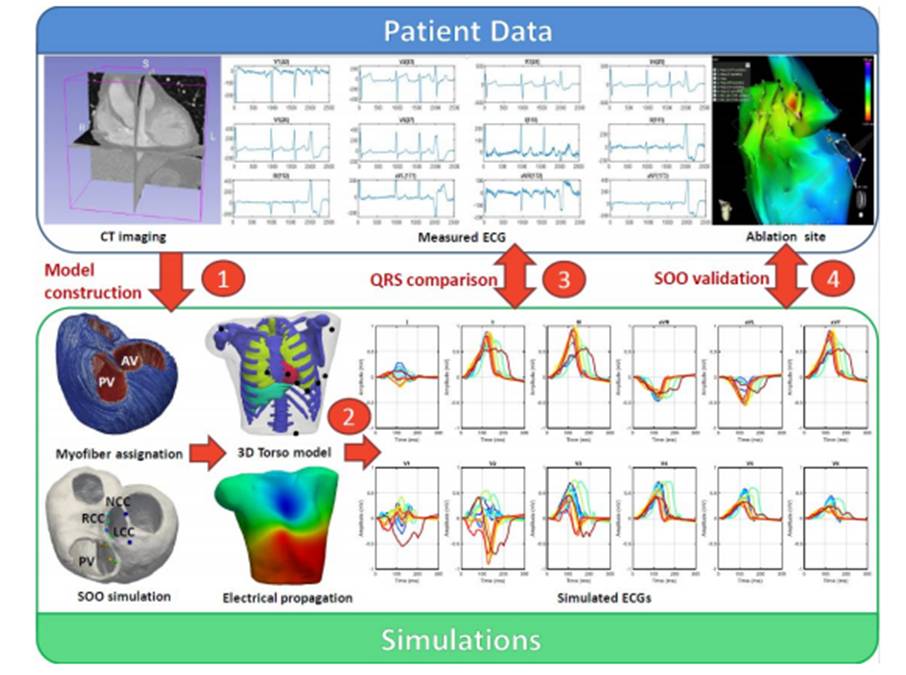Patients with ventricular tachycardia may benefit from computer modelling to plan their treatment
Such are the findings of an article published in an impact journal in the field of electrophysiology, EP Europace. The study led by Oscar Camara, a researcher at BCN MedTech, resulting from the doctoral work by Ruben Doste at UPF, was conducted in collaboration with researchers from the University of Valencia, Hospital Clínic in Barcelona and the Teknon Medical Center.

Identifying the origin of ventricular arrhythmias is important to properly plan radiofrequency ablation interventions. Despite the development of algorithms based on electrocardiography, their accuracy is limited, especially in complex anatomies. A recent study has considered using specific electrophysiological simulations of the patient’s heart to predict the origin of arrhythmias.
The results show that computer modelling of cardiac electrophysiological simulations is a tool that could help physicians to better plan radiofrequency ablation interventions in patients with ventricular tachycardia, according to a study published on 1 July in a high impact journal in the field of electrophysiology, EP Europace.
The study was led by Oscar Camara, a researcher at the BCN MedTech Research Unit at the UPF Department of Information and Communication Technologies (DTIC), with Ruben Doste, a doctor by UPF (2019), now conducting postdoctoral research at the University of Oxford (UK), as first author of the study, in collaboration with Rafael Sebastian, a researcher at the University of Valencia, with the participation of expert electrophysiologists at Hospital Clínic in Barcelona and the Teknon Medical Center.
Computational models that can be translated into clinical medicine
As Camara states, “personally, I am very happy because it is very difficult to develop computer models that can potentially be translated to clinical medicine, hence we have had it published in one of the best journals on electrophysiology”.
In short, the most relevant aspects of this research have been: to establish that the electrophysiological models obtained specific to patients with ventricular arrhythmias realistically simulate important features of electrocardiograms in terms of the origin of ventricular tachycardia; to be able to make a classification between the source of origin of the ventricles, whether left or right, by comparing the simulated and the real patient with 12-lead ECG; and finally to find that the technique of in silico pace-mapping of physiological activity presented in this study can help electrophysiologists to find the origin of cardiac arrhythmias before surgery.
“While the methodology developed has been tested in a small number of cases and a further study with greater numbers is required to confirm the preliminary results, it has been shown that computer modelling is a tool that could help physicians to better plan radiofrequency ablation interventions in patients with ventricular tachycardia”, the study authors conclude.
Reference article:
Ruben Doste, Rafael Sebastian, Juan Francisco Gomez, David Soto-Iglesias, Alejandro Alcaine, Lluis Mont, Antonio Berruezo, Diego Penela, Oscar Camara (2020), “In silico pace-mapping: prediction of left vs. right outflow tract origin in idiopathic ventricular arrhythmias with patient-specific electrophysiological simulations”, EP Europace, euaa102, 1 July, https://doi.org/10.1093/europace/euaa102
